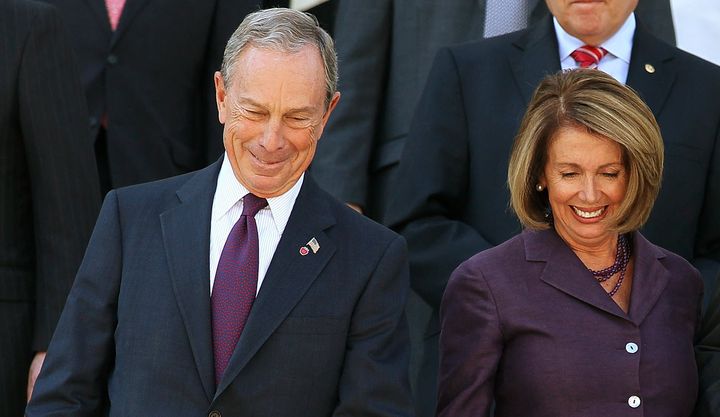The 2018 elections smashed records for overall midterms spending and for spending by independent political groups. But voters won’t know the sources of a significant portion of that money, which funded TV and radio ads, mailers, phone banking and more, until December.
That’s because federal campaign finance laws allow political groups to file reports on a periodic basis. The most recent required report from active committees covered a period through Oct. 17, and the next one isn’t due until Dec. 6, meaning that donations to spending groups after Oct. 17 won’t be revealed until weeks after the election.
Meanwhile, outside political groups often spend the most money in the weeks just before Election Day. Sludge has found that super PACs alone accepted and spent at least $87 million in undisclosed donations since Oct. 18, according to Federal Election Commission data as of Nov. 9.
“When donors aren’t reported until after Election Day, voters are deprived of information about who is trying to influence them,” Brendan Fischer, director of federal reform at the nonpartisan Campaign Legal Center, told Sludge. “Political operatives are growing more sophisticated at exploiting reporting schedules and legal loopholes to delay disclosure. Congress could fix this by requiring super PACs to disclose donors who write big checks in the final weeks before Election Day.”
Sludge identified 34 super PACs with mystery funders. These groups spent a total of $492 million on independent election expenditures between Oct. 18 and Election Day, meaning that nearly one out of every five dollars they spent came from unknown donors.
Groups backing Democratic candidates took in far more undisclosed cash—close to $58.7 million, or roughly two-thirds of the total—as compared to their Republican-supporting counterparts.
House Majority PAC, a super PAC supporting Democratic House candidates, spent the most undisclosed money after Oct. 17. The sources of $15.2 million, or 21 percent of its total independent expenditures in the 2018 elections, remain hidden. Previously disclosed donors include some of Democrats’ biggest financiers such as hedge fund manager James Simons ($6 million), Newsweb Corporation Chairman Fred Eychaner ($4 million), and LinkedIn co-founder Reid Hoffman ($3 million), according to the Center for Responsive Politics.
Second on the list is Michael Bloomberg’s Independence USA super PAC, which also supported Democratic House candidates and hasn’t disclosed the source of $14.1 million in donations, or 38 percent of its independent expenditure total. It’s very likely that Bloomberg provided the final donations in addition to his previous contributions, which accounted for the PAC’s entire 2017-18 budget through Oct. 17.
New Republican PAC, a super PAC recently led by Republican Florida Gov. Rick Scott, who is still in a close race for Senate with Democratic incumbent Bill Nelson, has kept $12.5 million in contributions hidden. The group spent $29.7 million on independent expenditures, mostly opposing Nelson, so 42 percent of its donations came from currently unknown sources. Disclosed donors this year include hedge fund manager Ken Griffin ($7 million), Home Depot co-founder Bernard Marcus ($500,000), and multiple members of the DeVos family, who each gave five-figure donations.
See below for a table of all super PACs that spent mystery money in the lead-up to Election Day.
Pop-up PACs
As the Center for Public Integrity reported, some super PACs were founded after the Oct. 17 deadline or waited to spend any money until after that date. These “pop-up PACs” include Texas Forever, which was formed on Oct. 19 and spent $2.3 million attacking Texas Republican Sen. Ted Cruz in his race against unsuccessful Democratic challenger Beto O’Rourke, and Forward Montana, also established on Oct. 19, which spent close to $10,000 backing Montana Democrats Sen. Jon Tester, who won, and Kathleen Williams, a House candidate who lost.
Sludge found additional “pop-up” PACs, all of which haven’t disclosed any donors. Liberal super PAC Black Progressive Action Coalition, which is linked to Black PAC, received $4.4 million in undisclosed donations and supported Democratic senators in red states including Claire McCaskill (Mo.) and Joe Donnelly (Ind.), both of whom lost re-election. Black Progressive Action Coalition has not filed a statement of organization, so it’s unclear when it was formed.
Other pop-up PACs include the liberal Save Our Elections Fund ($33,000 in undisclosed donations), formed on Nov. 3 to support unsuccessful Independent Florida House candidate Tim Canova, and conservative Restore Our Healthcare super PAC ($46,000), established on Oct. 31 to back Republican Senate candidate Martha McSally, who is behind in a very close race that’s still being counted.
Super PACs only account for some of the undisclosed donations to committees that spend on elections. Dark-money groups including 501(c)(4) “social welfare” nonprofits and 501(c)(6) trade associations spend heavily on elections and were not required to ever disclose their donors until a recent court ruling. The D.C. District Court decided that any group making independent expenditures must reveal all donors who give for “political purposes” and to further any of the group’s independent expenditures. As a result, the Federal Election Commission issued guidance on the new disclosure requirements.
But now that the new rule is in effect, most nonprofits still aren’t reporting their donors or are reporting only other dark-money groups as their funders, which still hides individual contributors.
Methodology: Sludge determined that a super PAC received and spent undisclosed donations by adding up all disclosed independent elections expenditures occurring from Oct. 18 on and subtracting the cash on hand amount as of Oct. 17, when the most recent periodic report was filed, accounting for amended 24- and 48-hour reports. Expenditures on special elections are not included in these data.
This article has been updated to include a quote from Brendan Fischer.



